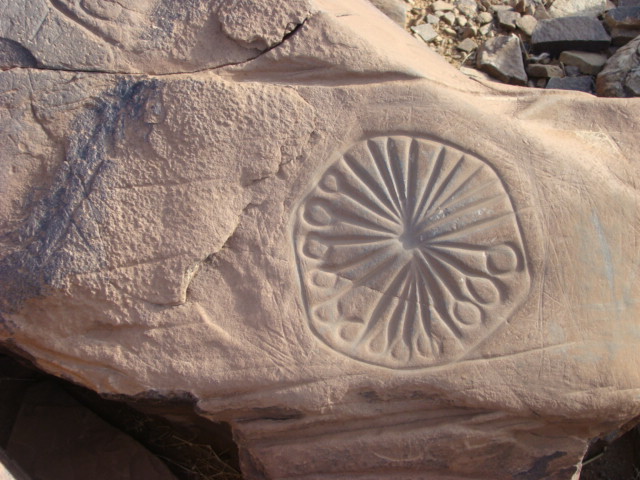The Rock engravings in Taouz South Morocco are located southeast of Errachidia, the capital of the Draa Tafilalet region.
Researchers and archaeologists have estimated the age of these inscriptions between 4100 and 7100 years BC. They were discovered by French researchers Jacques Meunier and Charles Alain in 1954.
Alongside these inscriptions, piles of stones and modest constructions have sprung up in the vicinity. The local rumor claims that they are family tombs named “Imirch”, guarded by the “Imirchn”. Archaeologists, however, speak of funerary tombs or Tumulus. It is a moving and mysterious testimony that emerges from this ancestral land.
According to other stories, these mysterious structures that still intrigue us today were not only places of eternal rest for the ancestors, but also family vaults for jewels, money, and family shards – a tradition that reminds us of the pharaonic pyramids. Indeed, their purpose was so versatile that they could only be defined by using the same prestigious title – the “Pyramids of Taouz”.
By observing these tombs, we can easily deduce that the families settled in this region nourished a deep belief in life after death. They worked hard to take their belongings with them and prepare themselves for a better life in the afterlife. Perhaps they too believed that they could be appreciated and used once they had crossed the barrier of earthly existence. This thought is quite similar to the one that prevailed in Egypt, many centuries ago.
Description of the inscriptions of the engravings of Taouz
The archaeological site of Taouz offers a treasure of inscriptions divided into three categories. First, the artistic renderings show majestic animals, such as cows, antelopes, and deer, accompanied by human figures. Second, the inscriptions of light wagons show the impressive evolution of the means of transportation used by the settlers in the region. Finally, we discover the letters of the Amazigh Libyan alphabet “Tifinagh”, giving a fascinating cultural touch. You will learn a lot about the history of Taouz and the era that saw its birth.













